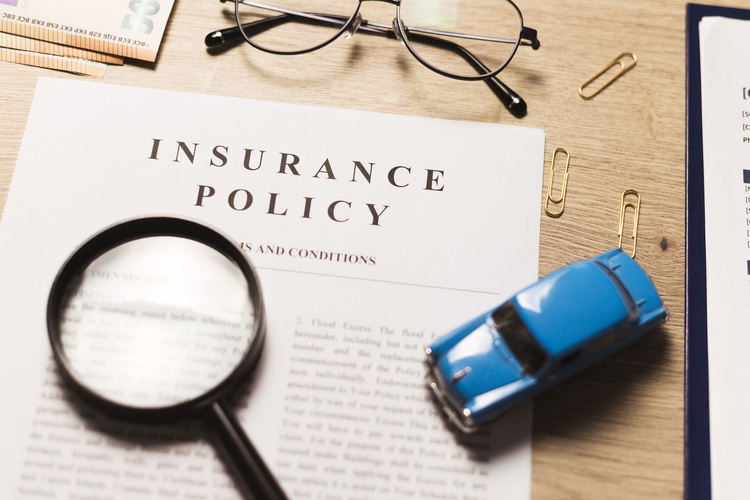
The definition of “Full Coverage” can vary depending on what website you look at. Some define it as a combination of Bodily Injury liability, collision, and comprehensive coverage. Others say it’s the state minimum liability limits with comprehensive and collision coverage ($10k per person/$20k per accident in Florida). And then there are some that say full coverage is what meets the qualification of leasing a vehicle (at least $100k/$300k in liability including comprehensive and collision coverage). There have been times in my career where people came to me and said their company told them they had Full Coverage on their auto policy, and they ONLY had comprehensive and collision coverage. Which of these definitions is correct? What if I were to tell you that none are correct? What If I told you that “Full Coverage” is not an actual insurance term? Mind blowing stuff, right? Let me explain.
Auto Insurance Coverage consists of a combination of these required and optional coverages:
- Bodily Injury Liability: Helps pay for another person’s medical expenses, loss wages, and legal fees that you (the at-fault driver) have caused.
- Property damage Liability: Helps pay for damage you cause to another person’s property
- Personal Injury Protection: Also known as “No Fault Coverage,” helps cover your medical expenses and loss wages from a covered loss no matter who is at fault in the accident.
- Collision Coverage: Helps pay for to repairs or to help replace your vehicle after it’s been damages in a car collision with another vehicle or property (like a mailbox or fence).
- Comprehensive Coverage: Pays for damage to the vehicle for things like hitting an animal, hail, vandalism, or for theft.
- Uninsured Motorist Coverage: Helps protects you if you get injured by someone who does not have insurance, or who does not have enough bodily injury liability coverage to cover your medical expenses. You can use this coverage after going through your Personal Injury Protection and medical expenses coverage if you have this on your policy.
- Medical Expenses: This can be added to the policy to give extra medical coverage to yourself if you exceed the personal injury protection coverage on your policy. This also goes into effect regardless of who is at fault in the accident.
- Rental Reimbursement: Pays for a rental car up to a certain amount while yours is being repaired by a covered loss. (limits are different for each carrier)
- Emergency Roadside Service: Help pay for things like towing or service if your car breaks down. Limits on this are also listed on the policy
Depending on which state you live in, there can be more or less of these components in your auto policy.
As mentioned in some of these coverages, there are certain limits to how much your insurance carrier will provide, and that’s if the loss is determined as “covered” by the claims adjuster. So just because you have Bodily Injury Coverage on your auto policy, if the damages exceed the policy amount then you would be paying out of pocket for the rest of the damages. To say that you are “fully covered” on your auto insurance is misleading, especially during situations where a claim is filed.
Let’s look at another example. Let’s say you have a loan on your brand-new vehicle and your bank requires you to carry “Full Coverage”, which for this specific scenario is Comprehensive and Collision coverages. You choose $500 deductibles for both. Your loan says there is also an option to choose Gap coverage on your loan. You choose to deny this coverage since they say this is optional. Some time goes by, and your car is involved in an accident. Thankfully you are fine, but the car has been totaled. Your insurance company only pays out the Kelly Blue Book value of your vehicle at the time of the loss, which is less than what you paid for it. You pay your $500 deductible along with what your insurance pays, but your bank says there is still a balance left on the loan. The insurance company does NOT pay the balance that’s left on the loan, because they say they already paid what the car is worth. It turns out the optional Gap Insurance coverage that you chose to decline would have helped to pay the difference in the loan. But didn’t my bank say I had “Full Coverage” with Comprehensive and Collision coverage? Why didn’t they explain this scenario more in depth with me about Gap Insurance, and why was this only considered optional? There are many other exclusions to an auto policy, so if an insurance agent or anyone else says “This car has full coverage”, it is not going to be true. This is why it is so important to have a conversation with your insurance agent to make sure the limits on your policy are what you feel is best for you. We can’t predict the future and say that the limits we choose today are going to take care of what is needed later, but with the right analysis we can make sure that the gap gets that much smaller. To make sure your auto insurance is the best fit for you, be sure to contact us!
